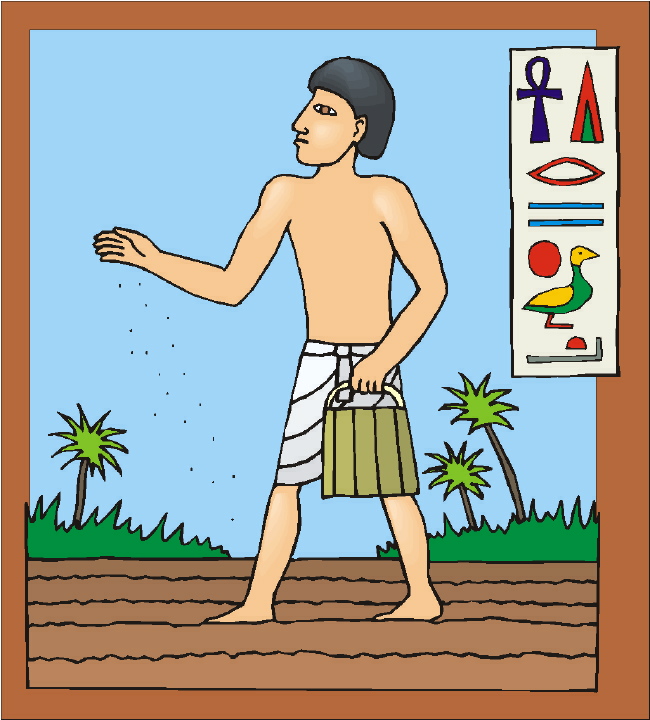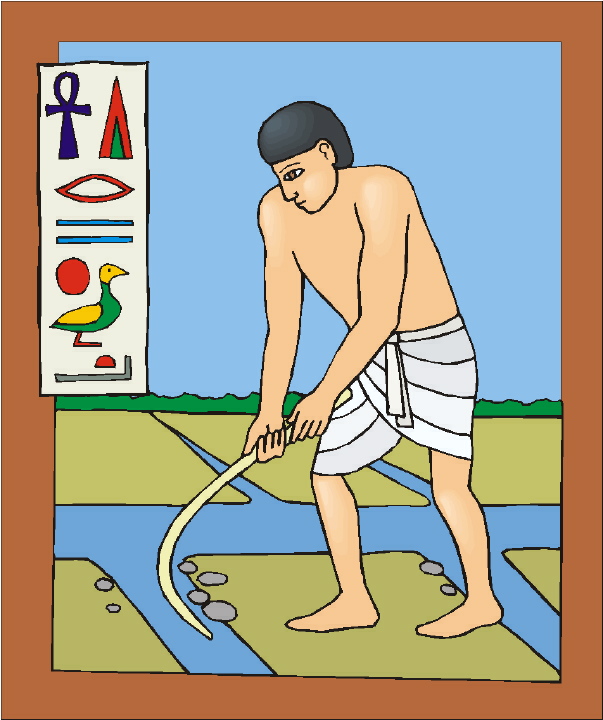

Ancient Egyptian Farmers and Fishermen
All
through the long, hot summer, the floodwaters of the Nile stretched as far as
could be seen. Farming families
eyed the shining expanse of water, watching and waiting for the day they could
return to their sodden fields. The
river took these fields away for a while every year, but it always gave them
back better than ever.
Working in the
Fields
Catch of the Day
How Do We Know That?
The Nile River was vital to the survival of the
ancient Egyptians. The rich soil left by the annual floods supported the
growth of enough crops to feed the nation. The river habitat was a plentiful
source of fish and wildfowl. To take advantage of the Nile's natural gifts, many
ancient Egyptians worked as farmers and fishermen.
Working in the Fields
Many Egyptians were farmers. They grew grains
such as barley and wheat, and many kinds of vegetables. Grapes, dates and other
fruits were also cultivated.
For ancient Egyptian farmers, a year was divided into three parts: the flood season, the planting season and the harvest. During the flood season, the Nile overflowed its banks, covering the farmlands. Since the farmers could not work in their fields, it was not uncommon for the Pharaoh to require them to do other work.
When the waters receded, fertile mud
was left behind and the planting season began. Farmers used wooden plows pulled
by oxen to turn the soil and then scattered seeds by hand.
Livestock was driven through the fields to trample the seeds firmly into
the ground. For the rest of the season, the ancient Egyptian farmers tended
their fields. To keep their crops watered, farmers used shadufs to fill
irrigation channels with water from the Nile. With a pivoting bucket and
counterweight, shadufs made it easier to raise water from the river.
Harvesting the crops was a big job, so
everyone had to help. Farmers and their sons would cut down the
stalks. They carried the stalks to
an area where the women and girls separated the useful seeds from the chaff.
Mounds of grain were bagged and counted. Part
of the harvested crops were given to Pharaoh's officials as a tax payment; the
rest was stored at the farmer's home.
Top of Page
Catch
of the Day
The ancient Nile was teeming with fish such as
tilapia, perch and catfish. On most days, ancient Egyptian fishermen were
probably able to bring home a good catch, but their job was not without risk.
Crocodiles and hippopotami also lived in the blue waters of the Nile.
Fishermen had to watch for these potentially unfriendly animals.
Ancient Egyptian fishermen used several tools to catch fish. They fished with bronze and copper hooks tied to lines or with sharp, pointed metal harpoons attached to reed poles. From their papyrus rafts, fishermen would cast nets to pull fish from the water.
Fresh fish was often a part of an
ancient Egyptian dinner. Fish was also dried or smoked and then stored for
future meals.
Top of Page
How
Do We Know That?
The Nile delta is one of the most fertile
regions in all of Egypt and farmers still work the land. Today, Egypt has a
significant fishing industry. Throughout
the 1990ís, nearly 298,000 metric tons of fish were caught in Egypt every
year.
Top of
Page
Some images on this page are © 2000-2001 www.arttoday.com.